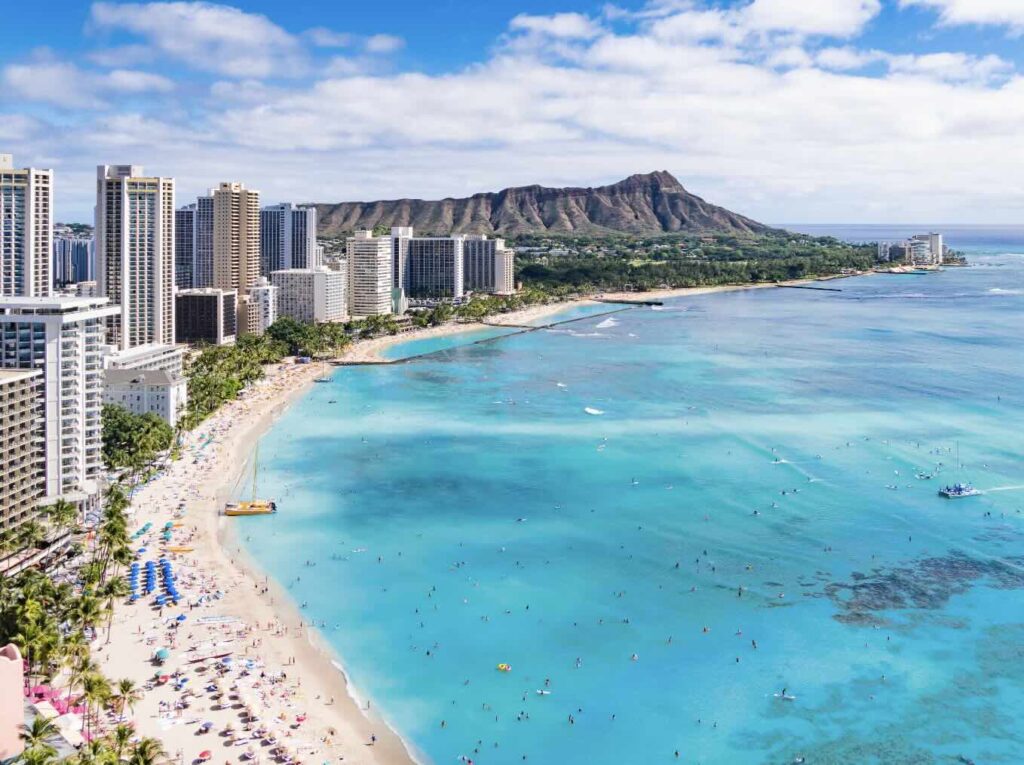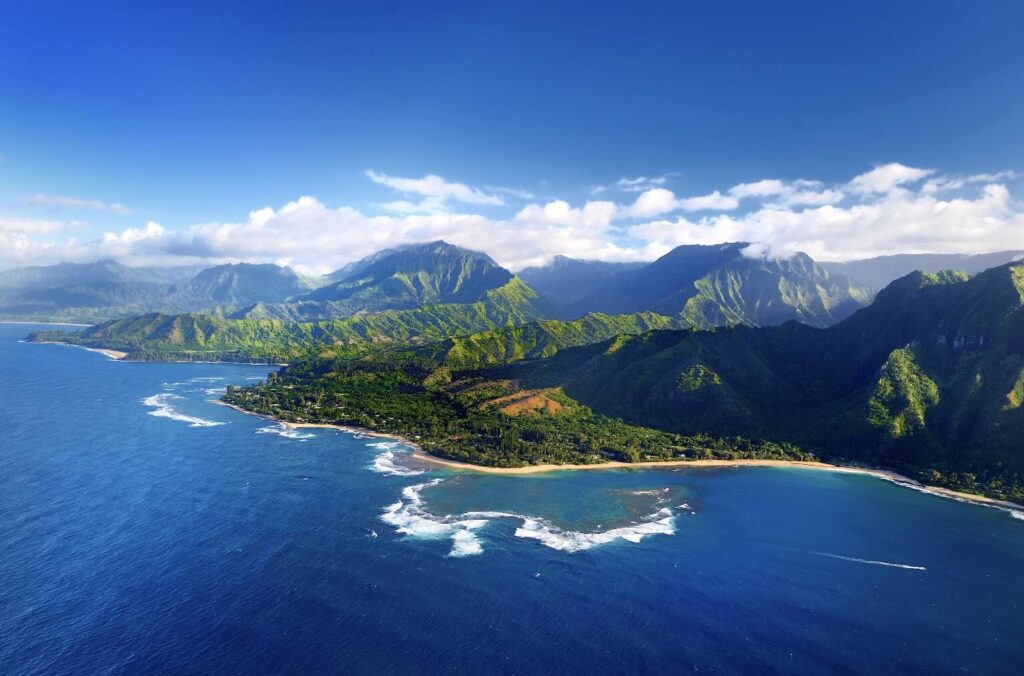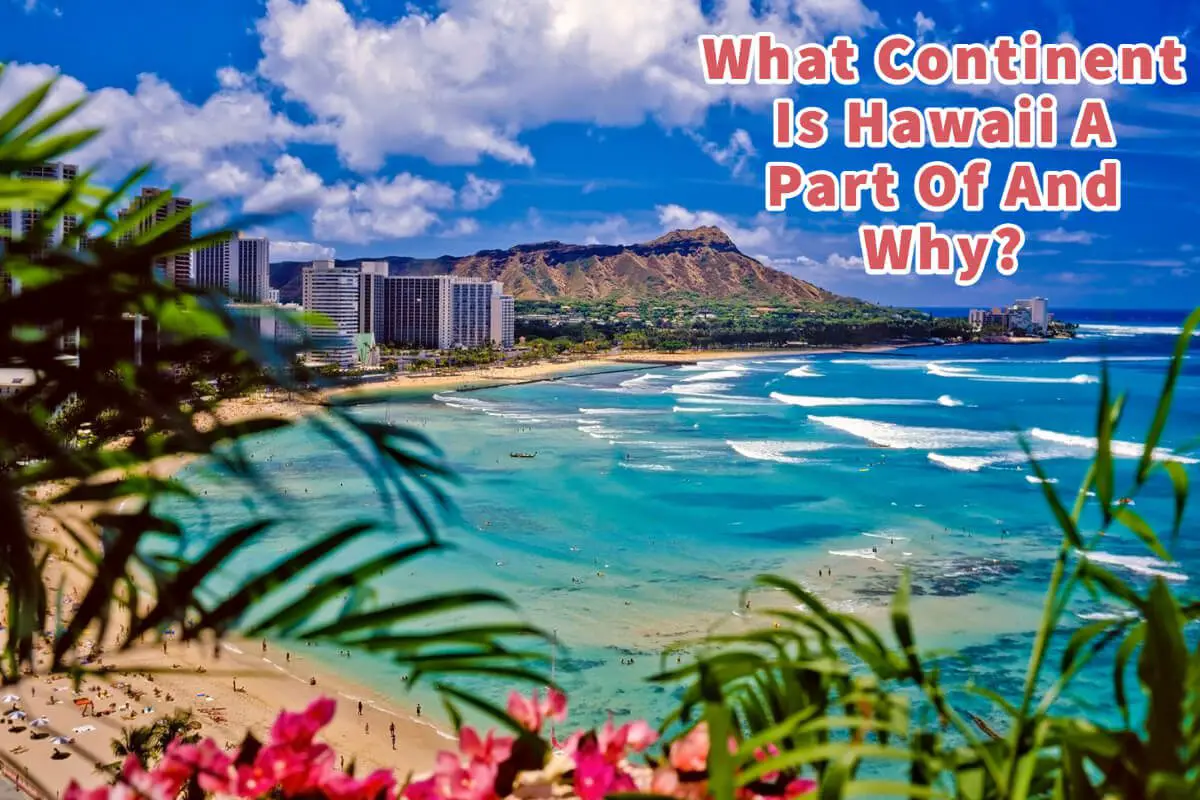When you travel to Hawaii, learning what continent Hawaii is on is interesting. Hawaii’s continent is not always a straight and easy answer.
Politically, Hawaii is considered part of the North American continent as it is one of the States of America. But location-wise, many people believe it is part of the Oceana continent as it is located within the area known as Polynesia. The main problem in defining what continent Hawaii is on is that Hawaii is in the middle of the Pacific Ocean and quite far away from other inhabited islands or countries of the world.
Table of Contents
- Politically, Hawaii Is Located In The Continent Of North America
- Virtually Travel The Road Of Hana With Conquer Virtual Challenges
- 12 Reasons Everyone Should Visit the Hawaiian Islands
- Related Questions
Politically, Hawaii Is Located In The Continent Of North America
Hawaii is a state of the United States of America; it is politically part of the North American continent. Most countries consider it part of America and the American continent.
Hawaii is over 2300 miles west of San Francisco; it is 3900 miles east of Tokyo and 4500 miles northeast of Australia. Even though it is closest to the U.S. west coast, it is still quite a distance from any part of America.

Hawaii is in the ocean by itself, and it is not near any large land mass; many people say that the state of Hawaii does not belong to any continent. But as Hawaii is a part of the United States of America, politically speaking, we must say it is part of the North American continent.
Hawaii Is Located Closer To The Oceania Region Or The 7th Continent.
Hawaii is not close to any part of the North American continent, but it is still considered part of the United States. Hawaii is in the middle of the Oceania region of the world.
Many consider the Oceania region to be the seventh continent. But still, Hawaii does not lie in the Oceania continental crust, meaning it is barely part of Oceania. Oceania includes Australia, New Zealand, and parts of Papua New Guinea.
Some people will place the U.S. state of Hawaii into the island region of Polynesia because the U.S. state of Hawaii is closer to many of the smaller Polynesian islands. Hawaii’s culture, landscape, and climate are closer to this region.
The Confusion Of What Continent Hawaii Is Part Of
There can be quite a bit of confusion about which continent Hawaii is part of. Sometimes, the world atlas will list Hawaii as part of the Oceania continent. Still, many other times, Hawaii is listed as part of the North American continent as part of the United States.

Whenever you look at a map of the United States, you will see the state of Hawaii always shows off the west coast of California in the Ocean by itself.
Location-wise, as Hawaii is closer to the Oceania continent, specifically the Polynesia area, it will get grouped into parts of Polynesia.
Add to this confusion, many of the smaller islands around the Hawaiian islands, such as the Palmyra Atoll, Kingman Reef, Baker Island, Johnston Atoll, Midway Atoll, Wake Islands, Northern Marian Islands, Saipan, and Guam, are U.S. territories or part of the U.S. Commonwealth and are closer to Hawaii than the west coast of the United States.
Many of these islands have no permanent residents and are run by the U.S. Fish and Wildlife Service; any people who live or visit there are usually U.S. Fish and Wildlife Service employees. Mainly, Guam and Saipan have people living on the islands.
Because all of these islands, which are also U.S. territory or the U.S. Commonwealth, would be considered to be in the Oceania continent, many people consider Hawaii to be located in the Oceania continent but politically part of the North American continent.
Virtually Travel The Road Of Hana With Conquer Virtual Challenges

If you cannot visit Hawaii, you can virtually travel with the Conquer Virtual Challenge through some of the most scenic parts of Hawaii or the scenic road on Maui called “The Road To Hana.”
Every time you swim, bike, cycle, run, or walk, you can put those miles into the Conquer Virtual Challenge app to virtually travel through Hawaii’s Road to Hana.
When you pass an important landmark, the Conqueror Virtual Challenge will email you a postcard to tell you about the area you have just traveled to and why it is an important landmark. This is a great way to get a feel for Hawaii and the Hawaiian islands.
You could travel alone or with friends and go as fast or slow as you want. I love to go onto Google Maps to see where I am traveling.
Once you have completed the challenge, the Conqueror Virtual Challenge will send you the Road To Hana medal to show you completed the journey.
To get 10% off your first Conquer Virtual Challenge, you can discover more by clicking on the link below:
12 Reasons Everyone Should Visit the Hawaiian Islands
Hawaii effortlessly tops the list whenever someone asks me about my most cherished travel destinations. The islands have carved a unique niche in my heart, and my bond with this paradise strengthens with every visit.

Here are 12 reasons why everyone should make a trip to the Hawaiian Islands and why I deeply love Hawaii:
- Incredible Beaches: The first thing that captivates you about Hawaii is its beaches. The Hawaiian coastline is a sight to behold, ranging from powdery white sands to dramatic black shores. Each beach visit is a renewed experience, making me fall in love with the islands all over again.
- Rich Culture: Hawaii is more than just scenic beauty; it’s a melting pot of traditions and customs. The spirit of ‘Aloha,’ hula dancing, and traditional chants offer a deep dive into an inviting and enchanting culture.
- Culinary Delights: Hawaiian cuisine is a blend of flavors influenced by its diverse settlers. From poke bowls to shaved ice, the islands have offered me a culinary journey I’ll never forget.
- A Haven for Relaxation: I think of Hawaii whenever life’s hustle and bustle gets overwhelming. The islands’ serene beaches, lush landscapes, and gentle ocean breeze have always been my go-to place to relax and rejuvenate.
- Breathtaking Landscapes: Beyond the beaches, Hawaii boasts majestic waterfalls, vibrant rainforests, and stunning volcanoes. Every turn offers a new postcard-perfect view, making it a paradise for nature lovers like me.
- Water Sports Galore: Hawaii’s warm waters are perfect for snorkeling, surfing, and paddleboarding. Even if you’re a novice, the islands provide a safe and thrilling environment to dive into these activities.
- Unique Wildlife: The islands are home to a diverse range of wildlife, including colorful reef fish, Hawaiian green sea turtles, and humpback whales. Observing these creatures in their natural habitat has been among my most cherished experiences.
- Stargazing Opportunities: Mauna Kea on the Big Island offers one of the best stargazing spots globally. Lying under the vast Hawaiian sky, I’ve often felt an unparalleled connection to the universe.
- Friendly Locals: The warmth of the Hawaiian people adds to the islands’ charm. Their welcoming nature and eagerness to share their culture have made each of my visits memorable.
- Historical Significance: Sites like Pearl Harbor provide a deep insight into significant events that shaped not just Hawaii but the world. They serve as a poignant reminder of our shared history.
- Adventurous Hiking Trails: From the cliffs of the Na Pali Coast to the volcanic craters, Hawaii offers hiking trails that cater to both beginners and seasoned trekkers. These hikes have given me an opportunity to witness the islands’ beauty from different vantage points.
- Tropical Climate: Hawaii’s year-round pleasant climate ensures that there’s no wrong time to visit. The mild temperatures and sunny days have always made my trips delightful.
Hawaii, for me, isn’t just a tourist destination. It’s a feeling, an experience, and a vivid tapestry of memories that beckon me time and again. If you haven’t visited the Hawaiian Islands yet, I’d say there’s a world of wonder waiting for you!
At A Bus On A Dusty Road, we talk about travel, life, and ex-pat living. We are all about “Living Life As A Global Citizen.” We explore social, cultural, and economic issues and travel.
We would love to have you be part of our community. Sign up for our newsletter to keep up-to-date by clicking here. If you have any questions, you can contact me, Anita, by clicking here.
Listen to our Podcast called Dusty Roads. You can find it on all major podcast platforms. Try out listening to one of our podcasts by clicking here.
Subscribe to our A Bus On A Dusty Road YouTube Channel with great videos and information by clicking here.
Related Questions
Is Hawaii In One Or Two Time Zones?
Hawaii has a one-time zone. It is in the Hawaii – Aleutian time zone, which means it shares a time zone with part of Alaska. Hawaii has never changed its time for daylight savings time because Hawaii is near the equator, so the sunrise and sunsets do not fluctuate significantly throughout the year.
By clicking here, you can discover Is Hawaii In One Or Two Time Zones?
How Do You Say “Hello” In Hawaiian And How It Is Traditionally Used?
In Hawaii, people will greet you by saying hello or aloha. They may also use the word aloha to say goodbye. Aloha is the traditional greeting in the Hawaiian language for greedy people that are friends, family, or even strangers. But the word aloha means much more than just hello or goodbye; there are many traditional and cultural meanings inside the word.
By clicking here, you can discover How Do You Say “Hello” In Hawaiian And How It Is Traditionally Used
Are Hawaiians And Samoans The Same Thing?
Hawaiians and Samoans are not the same groups of people; they are very different. Native Hawaiians are considered to be Americans. Most native Hawaiians do not speak the Hawaiian language. On the other hand, Samoans consider themselves from the archipelago of Samoa. Most Samoans speak Samoan and English. Culturally the two places are very different.
By clicking here, you can discover Are Hawaiians And Samoans The Same Thing?.

